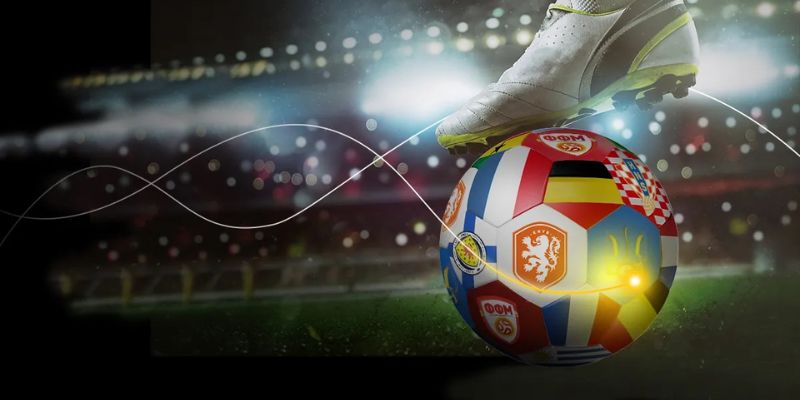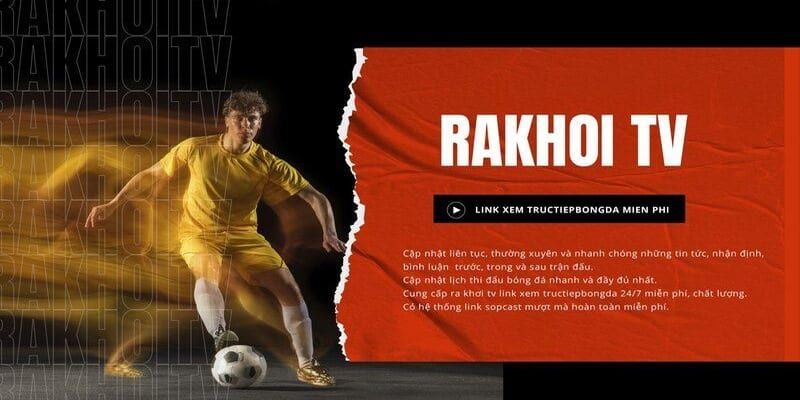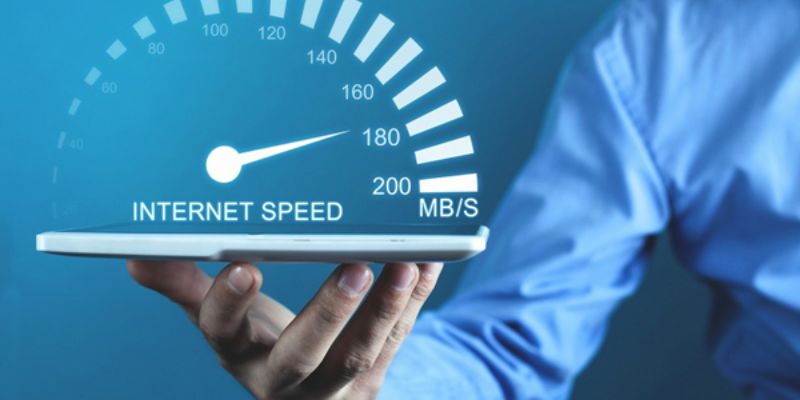Rakhoitv – Trực Tiếp Bóng Đá Rakhoi TV Full HD Miễn Phí
RakhoiTV đã trở thành một cái tên quen thuộc với cộng đồng người hâm mộ bóng đá trực tuyến. Trang web này thường xuyên cung cấp các dịch vụ phát sóng trực tiếp các trận đấu bóng đá miễn phí, nhằm đáp ứng nhu cầu và đam mê của người xem. Cùng khám phá chi tiết những điều thú vị của Rakhoi mang lại.
Giới thiệu tổng quan về RakhoiTV
Ngày nay, có nhiều trang web cung cấp dịch vụ bóng đá trực tiếp và thông tin thể thao. Trong số đó, RakhoiTV đang nhận được sự tin tưởng và ưa chuộng từ đông đảo khách hàng. Dưới đây là tổng quan về trang web để anh em có thêm thông tin chi tiết
Lý do Rakhoi ra đời
Việc thành lập RakhoiTV chủ yếu nhằm đáp ứng nhu cầu và đam mê của người hâm mộ đối với bóng đá. Đối với những người không có thời gian để xem trực tiếp tại sân cỏ, việc lựa chọn xem trực tuyến qua các trang web uy tín như Rakhoi là sự thuận tiện hàng đầu. Tại đây, anh em có thể thoải mái theo dõi nhiều trận đấu với quy mô lớn nhỏ khác nhau.

Trước đây, việc xem bóng đá trực tuyến thường đòi hỏi việc theo dõi trên các trang, kênh phương tiện của các đài truyền hình. Thông thường, việc này liên quan đến việc chi trả một số tiền lớn để sở hữu bản quyền phát sóng của các giải đấu nổi tiếng, điều này làm tăng độ khó khăn trong việc theo dõi bóng đá. RakhoiTV đã xuất hiện để giải quyết vấn đề này, mang đến những trận bóng đá trực tiếp uy tín, đáng tin cậy và an toàn.
Sơ lược mục tiêu của RakhoiTV
Rakhoi đặt mục tiêu trở thành điểm đến hàng đầu cho việc truyền tải trực tiếp các trận đấu bóng đá chuyên nghiệp, một cách chỉn chu và hoàn hảo. Website cung cấp dịch vụ hoàn toàn miễn phí, mang đến cơ hội cho những tín đồ đam mê bóng đá theo dõi trận đấu bất cứ thời gian nào. Sau vài năm hoạt động, Rakhoi đã đạt được nhiều thành công đáng kể, gần như hoàn thành mọi mục tiêu đã đề ra. Số lượng lượt truy cập hàng ngày tăng cao, là minh chứng cho sự phát triển mạnh mẽ của hệ thống.
Những ưu điểm nổi bật của kênh bóng đá RakhoiTV
Với những ưu điểm nổi bật, kênh đã thu hút được một lượng lớn tín đồ đam mê bóng đá truy cập mỗi ngày. Dưới đây là các điểm mạnh được đánh giá từ cộng đồng bóng đá.
Giao diện tinh tế, đẹp mắt
Ưu điểm hàng đầu của RakhoiTV nằm trong giao diện được thiết kế vô cùng hấp dẫn và cuốn hút. Người dùng sẽ được đắm chìm trong vẻ đẹp sang trọng, tinh tế và chuyên nghiệp của trang web. Giao diện này không chỉ đẹp mắt mà còn thông minh và khoa học, giúp khách hàng dễ dàng trải nghiệm và làm quen với nó một cách nhanh chóng.

Tính năng và dịch vụ được phân chia một cách rõ ràng, mỗi mục hiển thị trên thanh menu RakhoiTV để người dùng có thể dễ dàng theo dõi. Việc chỉ cần một cú click là có thể truy cập thông tin hoặc theo dõi trận đấu mong muốn. Thiết kế linh hoạt của trang web cho phép người dùng trên nhiều nền tảng khác nhau như máy tính, điện thoại di động hay laptop.
Tốc độ truyền dữ liệu nhanh, không giật lag
Một khía cạnh tiêu cực phổ biến khi xem bóng đá trực tuyến là sự xuất hiện thường xuyên của hiện tượng giật lag, đứng hình hoặc bị out ra khỏi trận đấu do đường truyền mạng không ổn định và áp lực từ số lượng lớn người xem, dẫn đến quá tải hệ thống.

Nhận thức được vấn đề này, RakhoiTV không ngừng nỗ lực để cung cấp các đường link chất lượng cao cho khán giả. Hệ thống livestream của họ tích hợp nhiều công nghệ và phần mềm hiện đại cùng với sử dụng các máy chủ hàng đầu trên toàn cầu. Do đó, khi xem trực tiếp bóng đá trên Rakhoi TV, người xem có thể yên tâm về việc không gặp phải hiện tượng giật lag.
Phát đầy đủ các trận đấu
Hiện nay, RakhoiTV đang phục vụ một loạt các giải đấu từ lớn đến nhỏ, tự hào sở hữu bản quyền đa dạng nhất tại thị trường Việt Nam. Để đạt được điều này, hệ thống đã phải đầu tư một lượng lớn nguồn lực để mua thành công bản quyền phát sóng cho những giải đấu hàng đầu trên toàn thế giới. Cụ thể, đó bao gồm:
- Cúp C1 (UEFA Champions League)
- Giải Ngoại hạng Anh.
- Giải Europa League – Cúp C2
- Giải bóng đá Ý – Serie A.
- Giải bóng đá Tây Ban Nha.
- Giải bóng đá Đức – Bundesliga.
- Giải bóng đá Pháp – Ligue 1.
- Giải bóng đá Việt Nam.
- Euro, World Cup và Sea Games,…
Để giúp anh em nắm bắt được thông tin về những trận đấu bóng đá được phát sóng trong ngày, RakhoiTV cập nhật lịch trực tiếp bóng đá một cách kịp thời, cung cấp đầy đủ thông tin cho mọi người tham khảo. Điều này giúp anh em dễ dàng xác định thời gian diễn ra các trận đấu mà họ quan tâm.
BLV RakhoiTV nhiều năm kinh nghiệm
Một trong những điểm độc đáo của RakhoiTV so với các đối thủ chính là đội ngũ bình luận viên đông đảo, đa dạng và chất lượng. Đây là những chuyên gia có tài năng và sở hữu sự chuyên nghiệp cao, với độ trải nghiệm lâu dài trong lĩnh vực này.

Điều đặc biệt là các bình luận viên tại RakhoiTV có khả năng sử dụng nhiều ngôn ngữ, trong đó có cả tiếng Việt. Mang lại sự yên tâm cho người xem khi theo dõi trực tiếp các trận đấu, vì họ luôn được đảm bảo có giọng bình luận viên (BLV) cung cấp phân tích, nhận định và đánh giá chất lượng.
Trong khi xem, có thể chia sẻ ý kiến, đặt câu hỏi hoặc đưa ra nhận định của mình trong khung chat. Mọi người sẽ cùng nhau thảo luận và chia sẻ ý kiến trong không khí tương tác. Trải nghiệm này hoàn toàn khác biệt so với việc xem đơn lẻ trên TV, nơi anh em thường không có cơ hội tham gia vào cuộc trò chuyện.
Xem bóng đá hoàn toàn miễn phí
Như đã được đề cập, tất cả các hoạt động và dịch vụ trên trang web đều hoàn toàn miễn phí. Người xem không cần phải đăng ký tài khoản hoặc chi trả bất kỳ khoản phí nào khi thưởng thức bóng đá trực tiếp hoặc cập nhật tin tức.
Để có thể duy trì điều này, RakhoiTV hoạt động với nguồn lực tài chính mạnh mẽ, được hậu thuẫn bởi một tập đoàn mẹ có uy tín. Điều duy nhất mà người xem cần là chuẩn bị thiết bị di động, có kết nối mạng để tận hưởng không khí sôi động và kịch tính của các trận đấu.
Xem trực bóng đá tiếp không quảng cáo
Khi theo dõi bóng đá trên các trang khác, người hâm mộ thường gặp khó khăn do thường xuyên bị chặn màn hình bởi các quảng cáo làm gián đoạn trải nghiệm xem. Tuy nhiên, khi lựa chọn RakhoiTV, anh em sẽ không phải đối mặt với vấn đề này. Quá trình xem sẽ không bị gián đoạn bởi những quảng cáo chiếm gần hết màn hình, tạo ra một trải nghiệm xem bóng đá mượt mà và không bị làm phiền.

Mang đến cho người hâm mộ những trải nghiệm xem bóng đá suôn sẻ và đầy hài lòng. Ngoài ra, việc tìm kiếm thông tin và tin tức về trận đấu cũng trở nên dễ dàng hơn, với các danh mục được thiết kế riêng biệt, tạo thành một hệ thống rất khoa học.
RakhoiTV cập nhật đầy đủ, chi tiết các thông tin thể thao
Bên cạnh việc cung cấp các đường link trực tiếp cho các trận đấu bóng đá, trang web cũng chia sẻ nhiều tin tức hấp dẫn và liên quan đến bóng đá gồm:
Đầy đủ lịch thi đấu bóng đá
Để biết lịch thi đấu chính xác của các trận đấu quan tâm, người hâm mộ có thể truy cập trang web của RakhoiTV. Tại đây, mọi thông tin về các trận đấu từ quy mô nhỏ đến lớn, từ trong nước đến quốc tế đều được cập nhật đầy đủ, đảm bảo phục vụ đam mê của mọi khách hàng.

Lịch đấu của các trận hôm nay và ngày mai sẽ được hiển thị ở đầu trang, giúp người xem dễ dàng tìm kiếm. Ngoài ra, trang cũng cung cấp thông tin chi tiết về trọng tài, huấn luyện viên, cầu thủ và nhiều thông tin khác. Tất cả những điều này giúp người xem nắm bắt một cách tổng quan về tình hình thực tế của giải đấu.
Bảng xếp hạng bóng đá
Hiện nay, trang web RakhoiTV không chỉ cung cấp đường link trực tiếp cho các trận đấu bóng đá mà còn đem đến cho người hâm mộ một nguồn thông tin đầy đủ về bảng xếp hạng. Tại đây, anh em sẽ có cơ hội theo dõi cụ thể về vị trí của các đội bóng trong những giải đấu nổi tiếng trên toàn thế giới. Thông tin này không chỉ giúp người xem đánh giá hiệu suất của đội mình yêu thích mà còn hỗ trợ họ trong việc đưa ra những dự đoán chính xác về kết quả trận đấu. Các chi tiết trên bảng xếp hạng bao gồm:
- Vị trí trên BXH.
- Điểm số của từng đội.
- Số vòng đã thi đấu.
- Hiệu số ghi bàn.
- Số quả thắng thua.
- Thông tin 5 trận đấu gần nhất.
Trang web liên tục cập nhật thông tin dựa trên những trận đấu gần đây từ nguồn tin đáng tin cậy. Sự kiểm duyệt chặt chẽ giúp đảm bảo tính chính xác lên đến 100%, mang lại sự yên tâm tuyệt đối cho người hâm mộ. Việc tham khảo bảng tin tức này giúp họ có cái nhìn chi tiết và hiểu rõ hơn về đội bóng mà họ đang ủng hộ.
Kết quả bóng đá chuẩn nhất
Người hâm mộ không chỉ được thưởng thức trực tiếp những trận đấu bóng đá hấp dẫn, mà còn có khả năng cập nhật ngay lập tức kết quả và tỉ số từ mọi ngóc ngách của thế giới bóng đá. Ngay sau cùng của mỗi trận đấu, thông tin về đội thắng, đội thua, hoặc tỉ số hòa sẽ được cung cấp ngay lập tức, đảm bảo anh em không bao giờ bị bỏ lỡ bất kỳ thông tin quan trọng nào.
Kết quả được Rakhoi TV cập nhật ngay tại đây từ các nguồn uy tín và được kiểm duyệt một cách chặt chẽ, mang đến sự chắc chắn về tính chính xác. Điều này giúp người sử dụng có thể yên tâm hoàn toàn khi tham khảo thông tin về kết quả bóng đá. Trong danh mục kết quả bóng đá, anh em sẽ tìm thấy những chi tiết quan trọng như:
- Tỉ số cuối cùng.
- Cầu thủ ghi được bàn thắng.
- Các pha kiến tạo đẹp mắt.
- Số lần ném biên.
- Số quả phạt góc.
- Thời gian kiểm soát bóng.
Xem video highlight trận đấu
Để đáp ứng nhu cầu của những người hâm mộ có thời gian hạn chế hoặc không thể theo dõi trực tiếp mọi trận đấu, RakhoiTV đã tạo ra một chuyên mục Highlight vô cùng hữu ích. Tại đây, sẽ tổng hợp những điểm đặc sắc của toàn bộ các trận đấu bóng đá lớn ngay khi chúng kết thúc. Việc chỉ cần truy cập vào chuyên mục này sẽ giúp dễ dàng xem lại những pha nổi bật của trận đấu đã bỏ lỡ.

Video Highlight sẽ bao gồm mọi diễn biến chính của trận đấu, từ các tình huống dẫn đến bàn thắng đến những pha bóng nguy hiểm, mang đến cái nhìn chi tiết về cách hai đội đã thi đấu. Chất lượng của video Highlight mà Rakhoi TV cung cấp được đảm bảo khá cao. Trong video, anh em sẽ trải nghiệm độ phân giải hình ảnh cao, âm thanh chân thực và tốc độ tải mượt mà, tạo nên trải nghiệm xem trận đấu hoàn hảo.
Xem tỷ lệ kèo nhà cái
RakhoiTV là trang web mà anh em nên truy cập ngay khi muốn xem kèo nhà cái trực tuyến cho bất kỳ trận đấu nào. Rakhoi đang liên tục cập nhật thông tin kèo cho tất cả các giải bóng đá, giúp người xem dễ dàng theo dõi và đánh giá tình hình các trận đấu.
Tại đây, anh em sẽ tìm thấy bảng kèo đầy đủ cho mọi trận đấu diễn ra hàng ngày. Khi xem bảng kèo bóng đá, anh em sẽ có cơ hội nắm bắt đầy đủ các thể loại kèo khác nhau. Đặc biệt, thông tin trong bảng kèo được cập nhật chính xác tuyệt đối, giúp có cái nhìn rõ ràng và chi tiết để tự tin hơn khi soi kèo và đưa ra quyết định đặt cược.
Xem nhận định trận đấu
Hiện tại, RakhoiTV tự hào có đội ngũ chuyên gia cá cược bóng đá hàng đầu, đảm nhận nhiệm vụ nghiên cứu và phân tích các trận đấu bóng đá lớn diễn ra hàng ngày. Rakhoi cam kết cung cấp nhận định và dự đoán chất lượng cao về các trận đấu, hoàn toàn miễn phí để anh em có thêm thông tin và tham khảo.
Khi xem nhận định trước trận đấu trên Ra Khơi TV, anh em sẽ được hưởng lợi từ kiến thức và hiểu biết của đội ngũ chuyên gia. Dựa vào những dự đoán chính xác, anh em có thể tự tin hơn khi đưa ra quyết định cá cược, với khả năng chiến thắng cao.
Hướng dẫn các bước để xem bóng đá tại RakhoiTV
Như đã đề cập trước đó, giao diện trang web Ra Khơi TV được thiết kế rất thân thiện và dễ sử dụng cho mọi đối tượng người dùng. Để dễ dàng tìm kiếm và xem bất kỳ trận đấu bóng đá nào trên trang web, anh em chỉ cần tuân thủ theo các bước sau đây:
Các bước xem bóng đá trực tiếp tại Rakhoi TV
Bước 1: Trước tiên người xem cần chuẩn bị các thiết bị di động hoặc laptop có kết nối mạng. Trên đó có cài các trình duyệt như Cốc Cốc, Google Chrome, Firefox.
Bước 2: Nhập các từ khóa vào ô tìm kiếm như “xem trực tiếp bóng đá RakhoiTV”, “xem bóng đá Rakhoi Live” anh em có thể nhập tiếng Việt không dấu.
Bước 3: Khi trang web hiển thị, hãy truy cập vào nó. Sau đó, nhấn vào phần “Trang Chủ” trên thanh công cụ và dựa vào lịch thi đấu, giải đấu để tìm chính xác trận đấu anh em mong muốn xem.
Bước 4: Sau khi đã tìm thấy trận đấu, nhấn “Xem ngay” và lựa chọn đường link phù hợp để thưởng thức trận đấu.
RakhoiTV được thiết kế tương thích với mọi hệ điều hành hiện đại, giúp anh em dễ dàng truy cập từ bất kỳ thiết bị nào để xem trực tiếp các trận đấu bóng đá.
Một số lưu ý khi xem bóng đá trực tiếp trên RakhoiTV
Để xem trực tiếp bóng đá tốt nhất, anh em cần lưu ý một số điểm quan trọng sau đây:

- Anh em nên sử dụng kết nối internet có tốc độ cao để đảm bảo trải nghiệm xem trực tiếp bóng đá tốt nhất. Mặc dù kênh sử dụng đường truyền hiện đại nhất, nhưng nếu kết nối internet gặp vấn đề, có thể xuất hiện tình trạng như đứng hình, lag hoặc bị gián đoạn khi xem.
- Nếu gặp tình trạng lag, giật hãy dừng lại khoảng 10 giây, sau đó tiếp tục xem
- Đối với những trận đấu hấp dẫn và được nhiều người xem, anh em nên truy cập và lấy đường link càng sớm càng tốt. Vì càng về sau, số lượng người truy cập có thể làm tăng nguy cơ link quá tải, khiến anh em gặp khó khăn khi vào trang.
- Mỗi trận đấu sẽ có nhiều đường link xem bóng đá trực tiếp khác nhau, với chất lượng hình ảnh khác nhau. Để có trải nghiệm xem tốt nhất, hãy chọn đường link phù hợp với thiết bị. Ví dụ, nếu thiết bị của anh em không hiện đại, hãy chọn link có độ phân giải hình ảnh thấp và ngược lại.
- Trong khi xem nếu gặp sự cố với đường link, anh em chỉ cần chuyển sang một link khác để tiếp tục xem trận đấu.
Lời kết
Hiện tại, RakhoiTV đang không ngừng phát triển và nâng cấp để trở thành một địa chỉ xem bóng đá trực tuyến hàng đầu. Mang đến cho mọi người trải nghiệm xem những trận đấu bóng đá hấp dẫn hàng ngày với chất lượng và trải nghiệm tuyệt vời nhất.
#rakhoitv #rakhơitv #rakhoi

